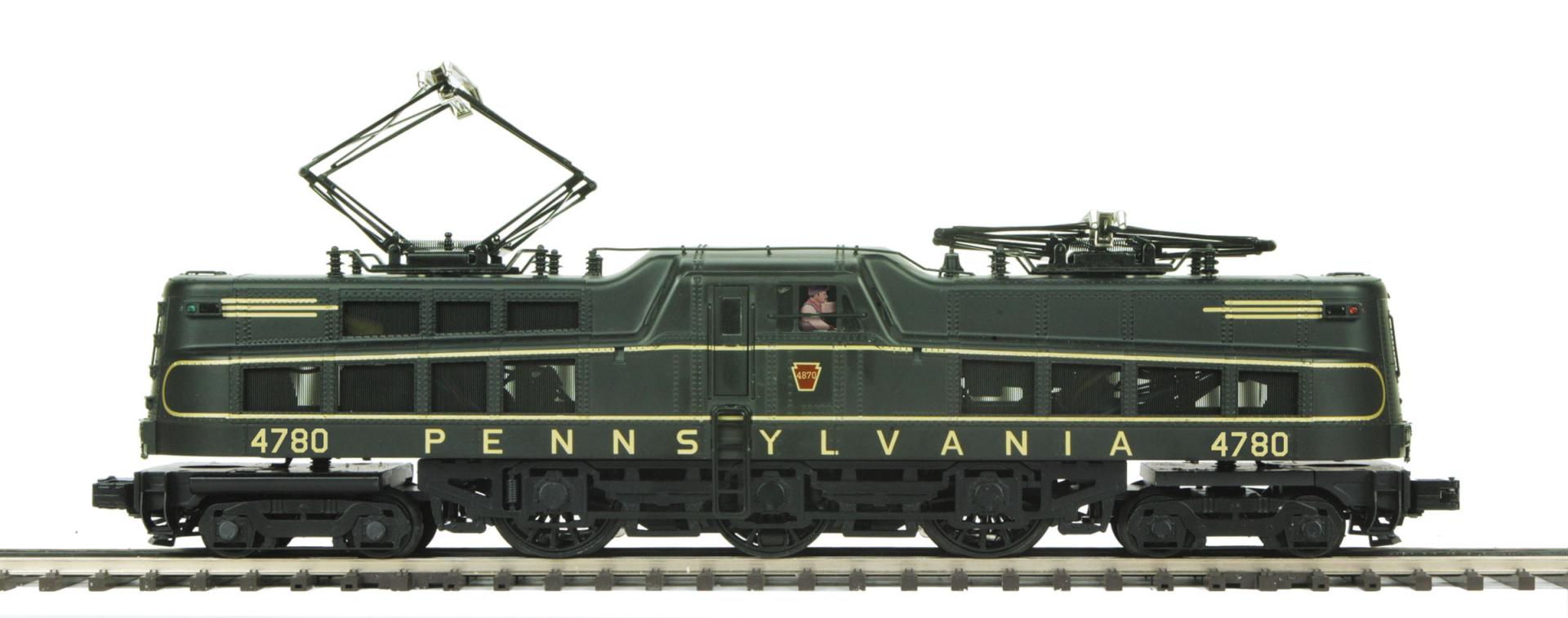Image

Image

Pennsylvania O Scale Premier P5a Electric Engine With Proto-Soundr 2.0
20-5581-1
List Price:
$699.95
Roadname:
Pennsylvania
Scale:
O Scale
Product Type:
Diesel/Electric Locomotive
Product Line:
Premier
Delivery Status:
Delivered DEC. 2006
Overview
Conceived in 1931, the Pennsy's P5a was intended to be the last step in the search for a mainline "juice jack" that had begun with the FF1 in 1917. A collaboration between General Electric, Westinghouse, and the Pennsy's electrical staff, the design proved to be a winner. Engine crews liked the P5a's because they were smooth, powerful, and cleaner than the K4s Pacifics they displaced on many runs. Six 625 hp electric motors geared to three axles with 72-inch drivers gave the new engine 3,750 continuous horsepower and a top speed of 90 mph on passenger runs. But the success of the Pennsy's passenger service proved too much for the P5a, whose limit was about 8-10 cars on high-speed runs. The introduction of the GG1 in 1934 allowed the Pennsy to operate longer passenger trains with a single locomotive, and pushed the P5a into freight service - where it found its true calling. Regeared to a top speed of 70 mph, the P5a fleet became the backbone of electric freight service on the Pennsy for the next several decades. The P5a's were originally built with box cabs and, like all box cab locomotives, made engine crews a bit nervous about their exposure in an accident. After a grade crossing collision with a truckload of apples proved fatal for the crew, the final 28 P5a's built in 1934 and 1935 were redesigned with a center cab in the image of the GG1, which was then in production. With their riveted bodies, these P5a Modifieds, as they were called, bore a strong resemblance to the original GG1, "Old Rivets." The P5a Modified returns to the Premier Line roster in 2006 after a six-year absence, decorated in four authentic paint schemes and outfitted with our smooth operating automatic pantographs. Also offered is one of the most unique specialty sets we've ever cataloged, the P5a Reefer Train featuring a string of highly detailed express reefers. Did you know? The prototype P5a, like our model, featured a blind (unflanged) center axle to allow it to negotiate tighter curves. Automatic Pantograph Operation Explained Users operating the P5a in conventional mode will find that by depressing the transformer's direction button to stop the locomotive, the rear pantograph will remain in the up position while the lead pantograph slowly rises up. Once the lead pantograph is in its up position, the rear pantograph will slowly lower into the down position. At this point another press of the direction button will cause the locomotive to reverse making the lead pantograph now the rear pantograph and in the up position. In command operation two operating modes will be offered; auto and manual. Auto mode will behave similar to conventional mode with the rear pantograph in the up position when moving. The up and down movement of the pantograph will be direction controlled using the DCST Digital Command Control System. In Manual mode, the user will have to raise and lower both pantographs via the DCST System as they wish regardless of directional state.
